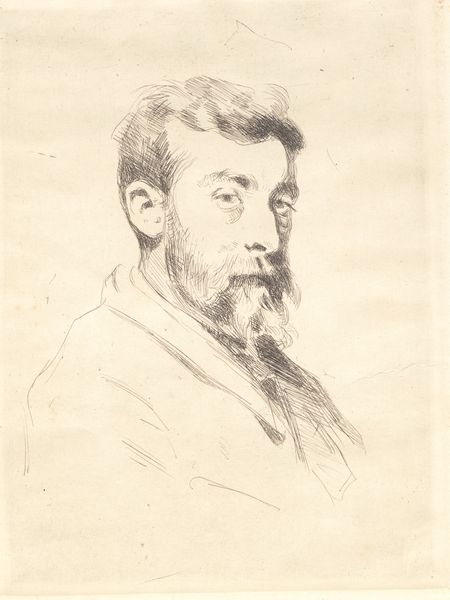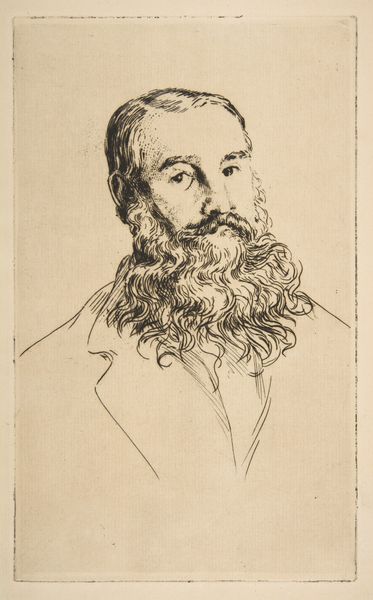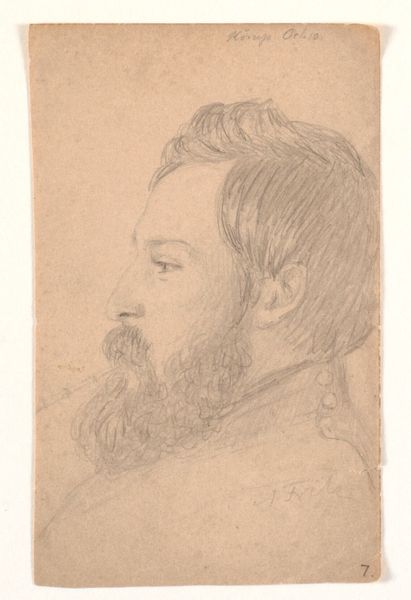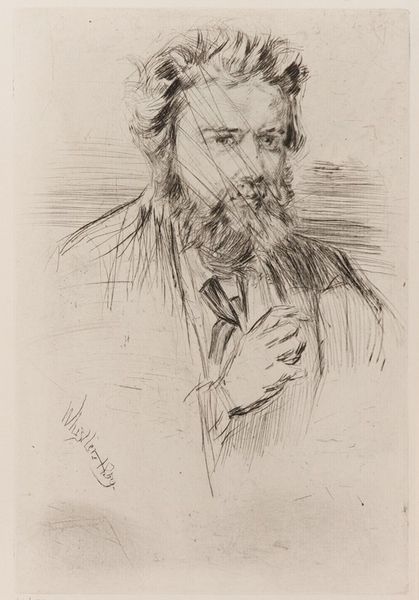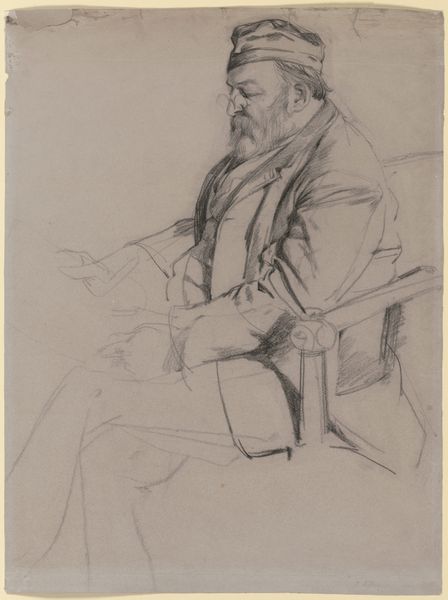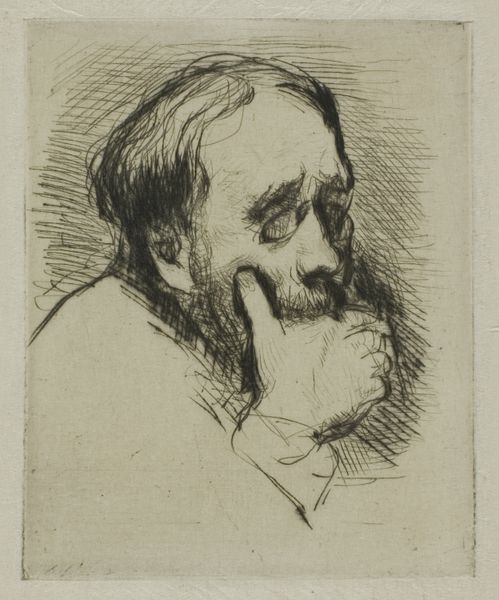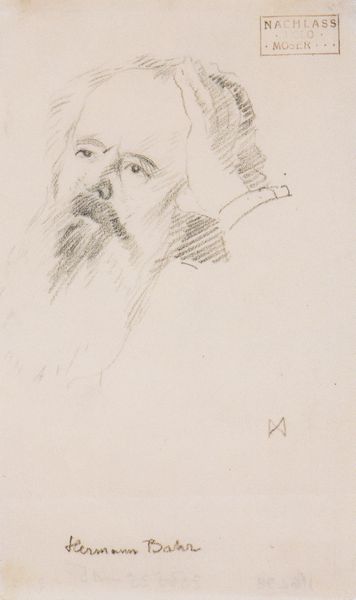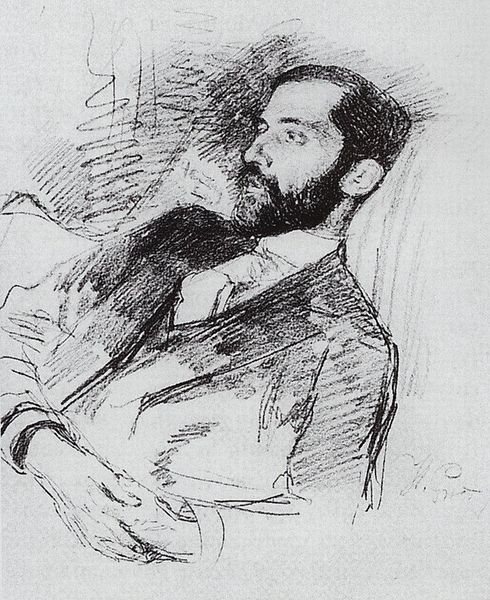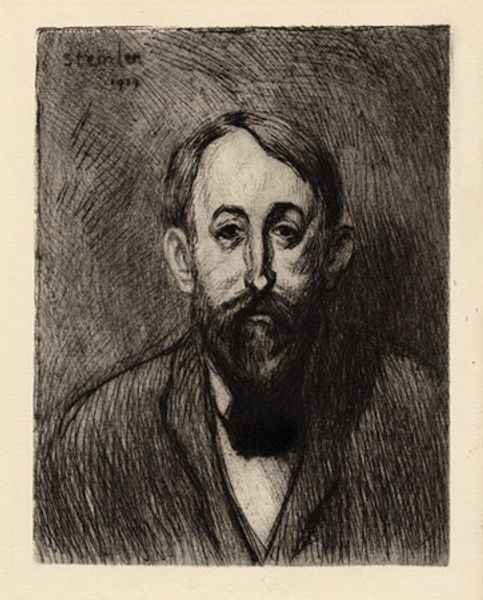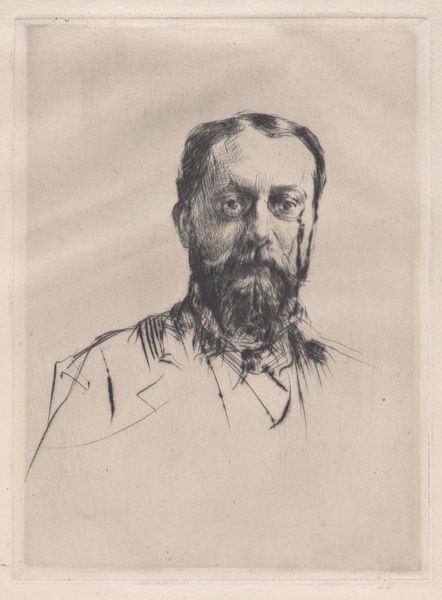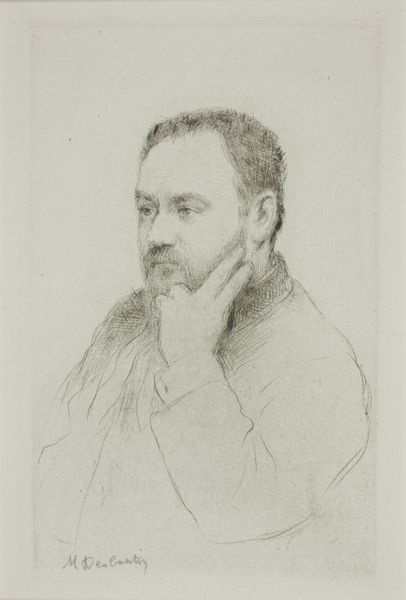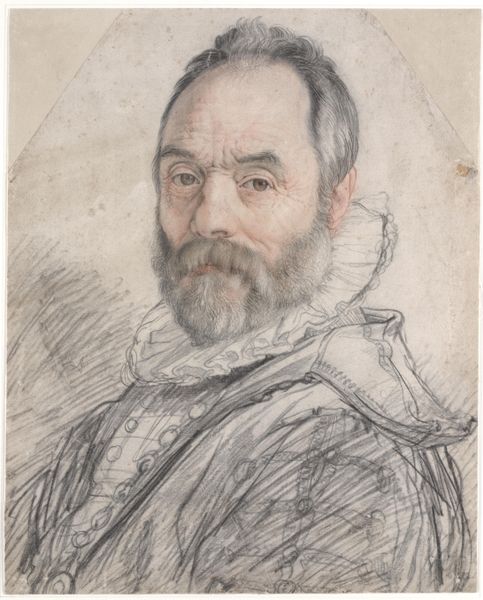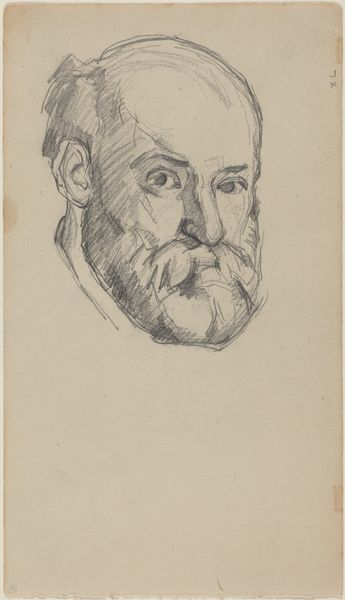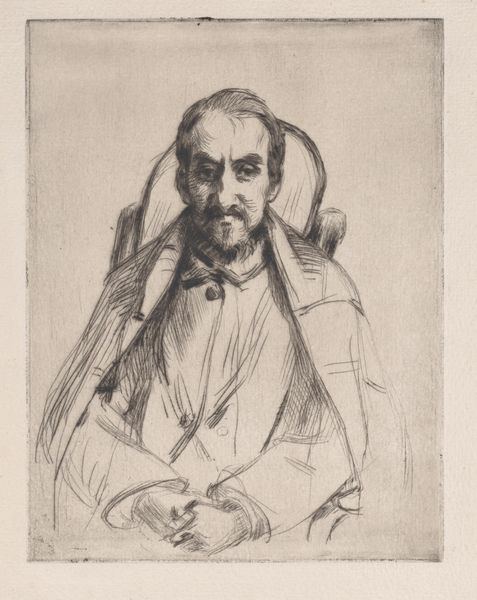
#
pencil drawn
#
amateur sketch
#
facial expression drawing
#
light pencil work
#
pencil sketch
#
pencil drawing
#
ink drawing experimentation
#
pen-ink sketch
#
portrait drawing
#
pencil work
Copyright: Public domain
Curator: There's something incredibly haunting about this portrait. It’s rough, unfinished, like a memory barely held. Editor: You're right, it’s rather stark. What we're seeing here is Paul-Albert Besnard's "Self-portrait," created in 1893. The piece utilizes light pencil work to bring the artist’s visage to life. It seems more immediate, perhaps more vulnerable, than a formal painted portrait. Curator: The roughness elevates it, doesn't it? The quick strokes of the pencil feel less posed, more revealing. What’s intriguing for me is that almost frantic hatching that seems to generate shadows behind the figure. Is that something beyond basic shading? Editor: I agree, there's certainly more than simple chiaroscuro at play. Considering the late 19th century's fascination with the subconscious, fueled by thinkers like Freud, Besnard's frenetic strokes might symbolize the roiling internal landscape, anxieties made visible, particularly as it's a self-portrait and therefore laden with layers of identity and the male gaze, both of which are still relevant dialogues today. Curator: The gaze itself feels weighty. There's a searching quality, as if he's peering not just outwards at a viewer but inward. Perhaps Besnard sought to capture the burdens and introspection that accompany the creative process. After all, portraiture has often been seen as something of an iconographic act. The image is what prevails. Editor: The unfinished quality makes me think about class politics, actually. Historically, the privilege of having a completed formal portrait was generally restricted to the aristocracy. That Besnard would stop short here, even in a self-portrait, begs questions about his relationship to artistic patronage, about the elite structures of the art world even back then. Was this a statement in and of itself, against traditional portraiture’s inherent social stratification? Curator: That's compelling. He gives us himself but not *entirely*. It leaves the portrait open, which feels decidedly modern. Well, regardless of intent, Besnard has given us something quite potent. A study in revealing and concealing simultaneously. Editor: Indeed. I’m glad we could reflect a little more deeply on what such gestures in art may convey.
Comments
No comments
Be the first to comment and join the conversation on the ultimate creative platform.
